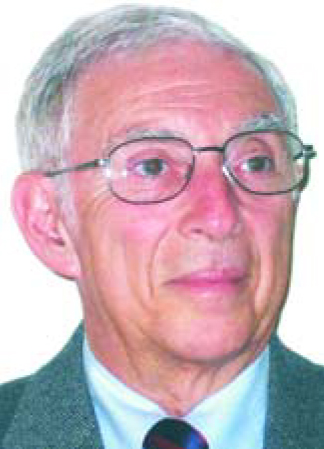Bienenstock is new APS vice president
DOI: 10.1063/1.2186286
Arthur I. Bienenstock, a proponent of openness in research and a former longtime director of the Stanford Synchrotron Radiation Laboratory, took office as vice president of the American Physical Society on 1 January. He will become president-elect in 2007 and president in 2008.
Ken Cole, special assistant to the executive officer of the APS, said this year’s slate of officers was rearranged slightly as a result of the death last August of John Bahcall, the society’s 2005 president-elect. John Hopfield, who was vice president at the time (see Physics Today, February 2005, page 80
The vice provost and dean of research and graduate policy at Stanford University, where he also holds a joint appointment at SSRL and in the departments of materials science and applied physics, Bienenstock said some of his primary concerns include developing strong federal funding for physics and engineering research, maintaining a strong science and technology workforce, and balancing national security requirements with the need for research without restrictions or secrecy.
“A sustained effort against terrorism requires a strong economy and advanced technology, [and] a strong economy and technological leadership require the federal government to provide healthy research funding and to seek to ensure an effective science and technology workforce,” Bienenstock said in a prepared statement after his election. He said a strong S&T workforce needs to continue to attract women and minorities. Bienenstock also called for an ongoing exploration of nuclear energy.
Bienenstock received his doctorate in applied physics from Harvard University in 1962. A year later, he began teaching in Harvard’s division of engineering and applied physics, and in 1967 he joined Stanford’s materials science and applied physics departments. He chaired Stanford’s committee on undergraduate admissions and financial aid and served as the university’s vice provost for faculty affairs and faculty affirmative-action officer.
Throughout much of that time, he was also an associate director of the SSRL. In 1978, he became director of the lab, a position he held until 1997. In 1992, SSRL was incorporated into SLAC and he became a SLAC associate director. From 1997 to 2001 Bienenstock was associate director for science of the White House Office of Science and Technology Policy, and from 2001 to 2003, when he accepted his present position, he was director of Stanford’s Geballe Laboratory for Advanced Materials.
Bienenstock served as APS general councilor; was on the APS’s committees on applications of physics, audits, and public affairs; and served as chair of the ethics committee.
In other APS election news, Margaret Murnane was named chair-elect of the APS nominating committee for 2006. Murnane is a JILA fellow and a member of the physics department faculty at the University of Colorado. Two general councilors were selected by the society’s members to serve three-year terms beginning in 2006: Christina Back, center head of high-energy-density physics targets and research at General Atomics in San Diego, California, and Wendell T. Hill III, professor at the University of Maryland, College Park, with appointments in the Institute for Physical Science and Technology and the physics department.






